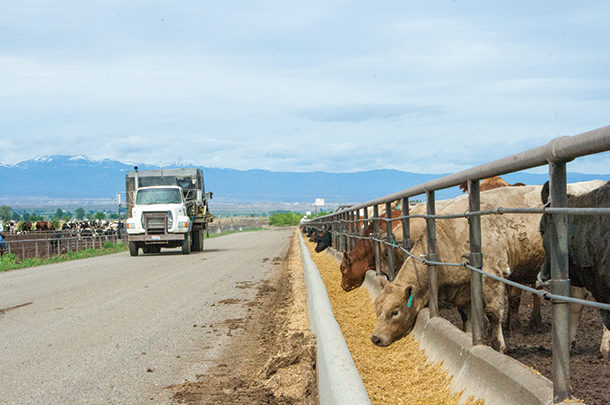Animal agriculture – the beef industry in particular – continues to be the target of criticism regarding sustainability. The industry is a target despite contributing less than 4% of all greenhouse gas emissions in the U.S. and various initiatives to continue to reduce that number.
Even with all the attention on it, sustainability is a difficult topic to cover; in my opinion, it is an impossible topic to cover completely. For starters, sustainability has categories and meanings, such as economic, environmental or social sustainability.
The discussion of sustainability in beef production should first focus on the economic sustainability of raising beef. This may be oversimplified, but I remember the words a wise economics professor once told me. “Price or monetary value is simply a reflection of resources or the scarcity of resources used to produce it.” If we think of sustainability in this manner, focusing on economic sustainability should point us in the right direction for making the best decisions when it comes to the optimal utilization of our environmental and social resources.
I believe there are several examples we might be overlooking when thinking about the things we are doing in beef production that are not only economically sustainable for our operations but also for environmental and social aspects.
We look at measures and metrics on a daily basis that directly correlate with both economic and environmental sustainability. We may be economically incentivized to recycle nutrients in manure to reduce purchases of commercial fertilizer while also restoring the land with valuable and sustainable nutrients. Average daily gain (ADG), feed efficiency, death loss, weaning weight and pregnancy rate are all numbers that impact our bottom line and our sustainability.
For example, the difference between a 90% calf crop and 75% calf crop on a 10-cow operation would be 15 calves for easy math. If these calves average 500 pounds, there was another 75 pounds of calf weaned per cow exposed to breeding. Not only does optimizing performance improve our profitability, it also leads to sustainable beef production. Looking at current performance is a great place to start when studying sustainability. However, we cannot manage what is not measured, so data becomes important when making decisions around profitability and sustainability.
Sustainability is core to efficient nutrition as well. Whether it be the focus of forage utilization in a cow-calf operation or feed efficiency in the feedlot, every segment is motivated to produce more beef using less feed, land and water. For example, use of rotational grazing has improved forage and land utilization by 20% to 30% where applied. Improvements in genetics for growth and implants have also led to more rapid and efficient gains in the feedlot.
When we look at sustainability in our nutrition program, it often revolves around making the most out of what we have. This includes sampling on-farm forages and improving how we store and utilize our forage resources. Reducing waste during the harvest, storage and feeding of forage, in my opinion, is one of our next big opportunities for improvement in sustainability. As we look at non-forage nutrient sources, it is often advantageous in the ruminant animal to use byproducts, which are essentially waste products of the human food and biofuel business.
Again, this puts us in the place of using the rumen to recycle nutrients that couldn’t be utilized anywhere else and furthering our sustainability model. If we step back and look at our nutrition program, it is the perfect example of our sustainability story. We use cost as our measure of resource use and optimize least-cost nutrients to best meet the needs of the cow or calf. This maximizes performance while minimizing our cost or resource use.
Use of technology is another example of how we use science to not only become more profitable but also improve the utilization of our resources. Implants, ionophores and dewormers are great examples of technology that allow us to produce beef more profitably while using less feed and water to produce a pound of beef. If you comb through the research, proper use of these three technologies alone can easily provide another 100 pounds of finished weight on a steer with no additional use of feed or water. By striving to make improvements in performance and become more profitable, we are directly reducing the resources required to produce a pound of beef.
To me, the beef business is very sustainably minded by taking an unusable resource, including grass or byproducts mentioned above, and turning it into safe, wholesome protein for human consumption. Economically sustainable beef production does this as efficiently as possible. Equipment, land and fertilizer are all resources that cost money, and we are economically motivated every day to produce more beef on fewer resources.
If we simplify the conversation around sustainability, and understand how performance of our individual operations impacts our economic and environmental sustainability, it becomes much easier to make decisions that align beef as the sustainable protein of choice by our consumer. As U.S. cattle producers, we already operate the most efficient beef supply chain in the world, but we must continue to make progress in sustainability to meet the demands of our consumers and leave a profitable operation for generations to come.









